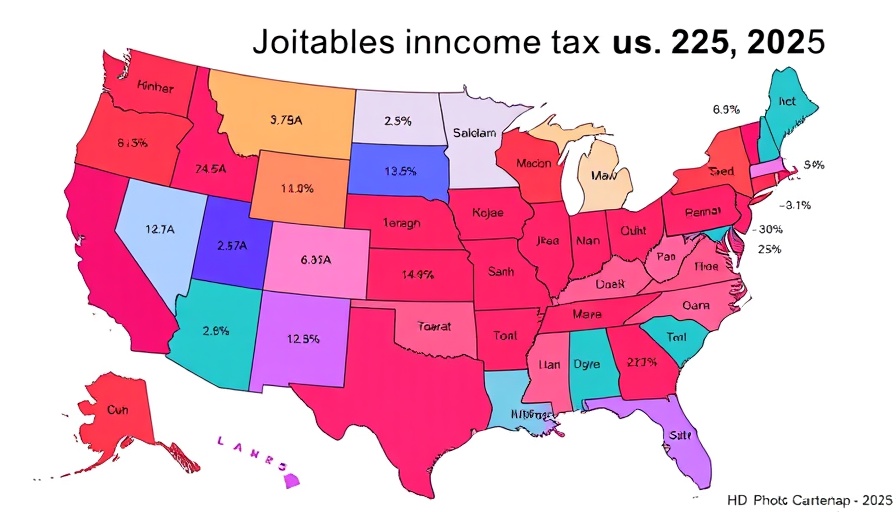
Understanding State Income Tax Structures in 2025
As of 2025, individual income taxes remain a crucial portion of state government revenues, representing a substantial 33% of total state tax collections in FY 2023. With 42 states currently imposing these taxes, they have become a focal point of public policy due to their direct impact on citizens. This article takes a closer look at the various state individual income tax rates, the number of brackets, and significant changes expected this year.
The Landscape of State Income Tax Rates
Among the states levying income taxes, there exists significant variation in tax structures. As noted, 14 states have adopted a single-rate tax system while 27 states and the District of Columbia utilize a graduated rate system. This can have profound implications for individuals and businesses, especially as top marginal rates vary widely—ranging from as low as 2.5% in states like Arizona to a steep 13.3% in California.
A Complex Reality: Tax Brackets and Their Implications
Tax brackets represent ranges of income that are taxed at specific rates, and the design of these brackets can significantly affect households. For instance, Virginia’s tax structure applies its highest rate on income earned above $17,000, showcasing how some states cluster many tax brackets into narrow income bands. Conversely, other states reserve their top rates for incomes significantly above $1 million.
Addressing Tax Challenges for CPA's and Businesses
For CPAs and business owners, understanding these state-specific tax structures is essential. Tax decisions often hinge on these rates, as businesses must navigate varying standards for tax deductions and exemptions that substantially differ between states. Tax professionals must stay updated not just on existing rates, but also on how these impacts large and small businesses differently, particularly following the recent wave of tax reforms across many states.
The Trend Towards Simplification and Reduction
Recently, many states have begun to reduce individual income tax rates as part of larger tax reforms aimed at fostering economic growth. Notable examples include Arkansas reducing its rate to 3.9% and Louisiana transitioning to a flat rate of 3%. These changes reflect a broader trend where states are simplifying their tax codes and reducing rates to remain competitive in attracting new businesses and retaining residents.
Surveying Future Trends in State Taxation
Looking ahead, analysts speculate that the ongoing revision of tax codes will continue as states adjust their tax policies in response to economic demands and public sentiment. As state budgets evolve, so too will the structures through which income is taxed. Potential changes may include increased standard deductions or revised personal exemptions, both of which serve to alleviate the tax burdens on middle-class families.
Conclusion
For CPAs and businesses, understanding state income tax structures in 2025 is more critical than ever. Staying informed about rates, exemptions, and bracket changes can help businesses navigate their financial obligations better and aid individuals in optimizing their tax liabilities. It’s advisable for professionals in the field to keep abreast of legislative changes and plan accordingly to ensure compliance and strategic tax planning.
 Add Row
Add Row  Add
Add 




Write A Comment